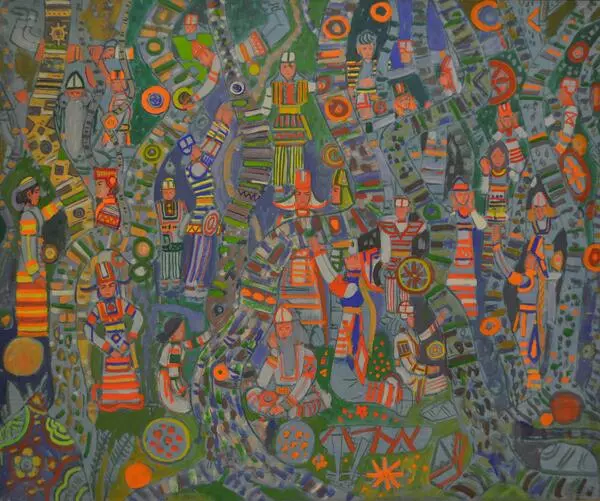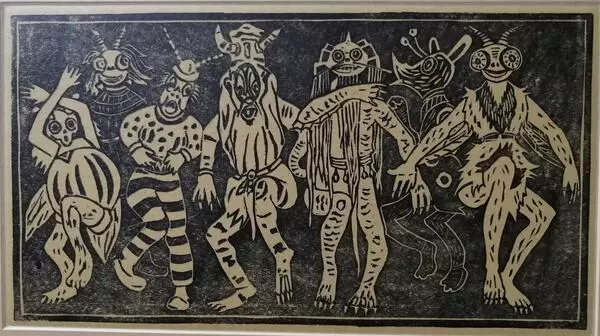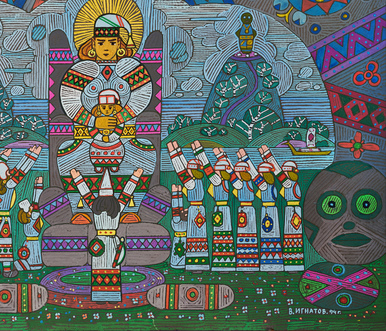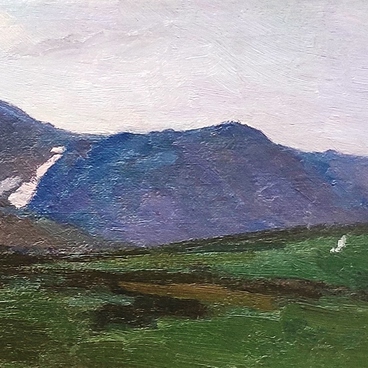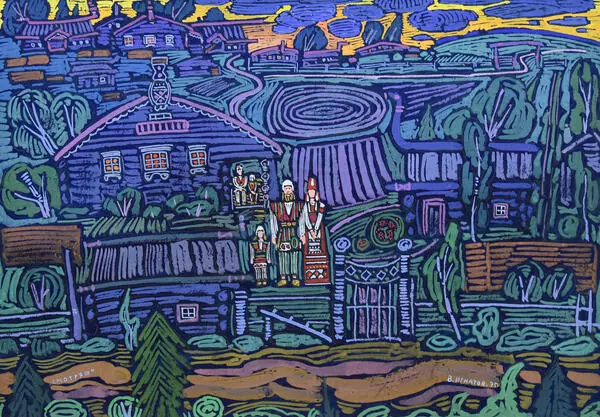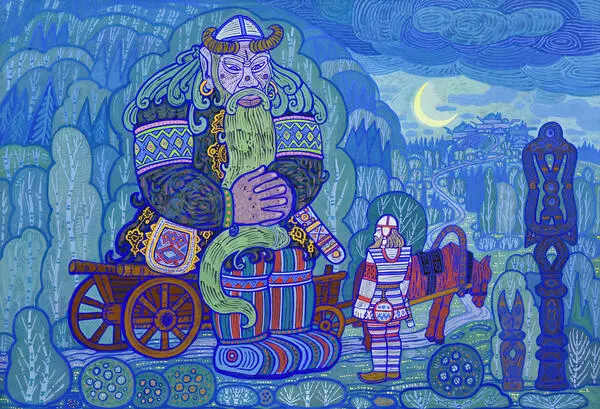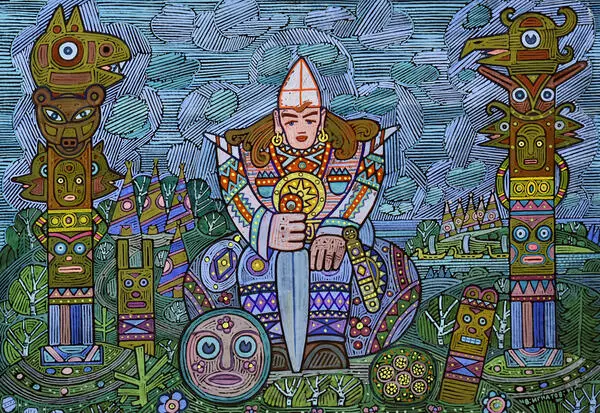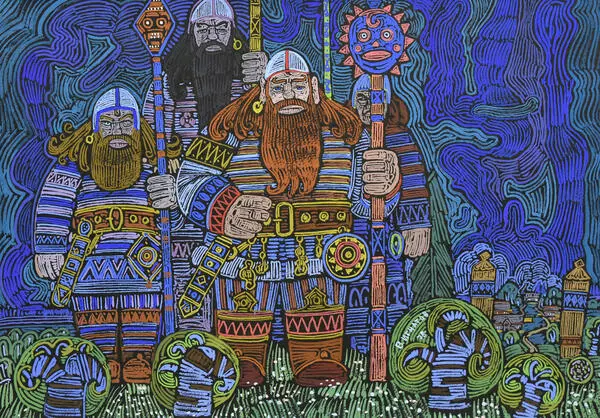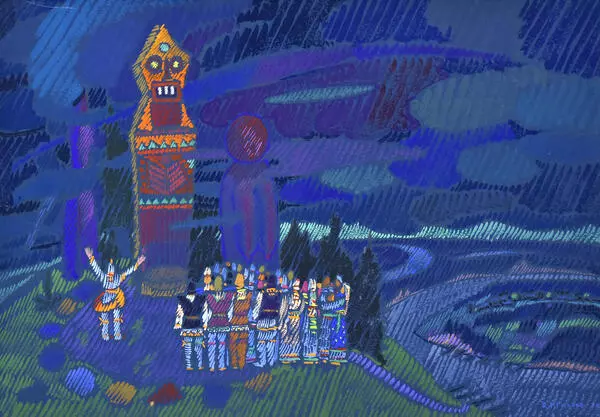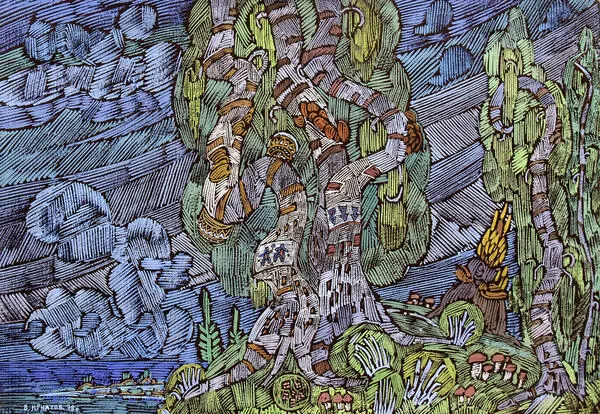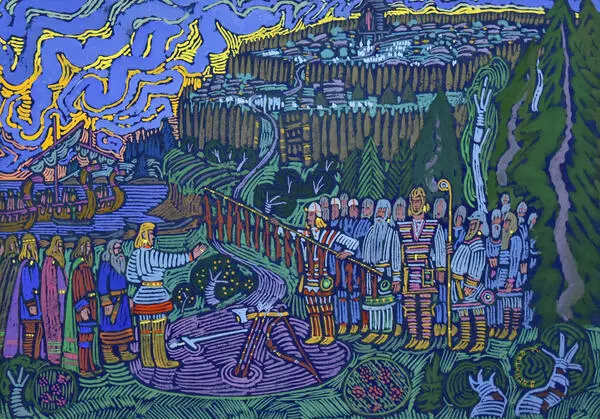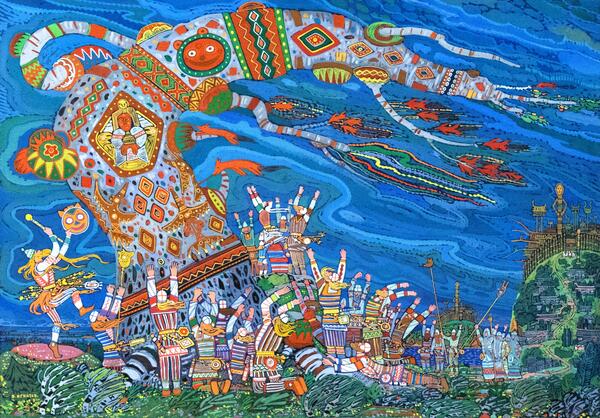The Soviet artist and animator Vasily Ignatov interpreted the life of the ancient Komi people through colorful, ornamental, and generalized images. His artistic style was influenced by national decorative patterns and Vincent van Gogh. He became a forerunner of ethnofuturism. Art critics compare the elaborate ornaments of Ignatov’s paintings to the texture of wood, and the artist himself to frost leaving its crystals on windows.
Vasily Ignatov created a series of themed paintings dedicated to the paganism of the ancient Komi people. One of them is titled “We Come from the Olden Times”. The artist emphasized the strong tribal relationships and the continuity of generations. The largest images are the ones of the elders — a man and a woman. They are the main characters here.
In the center of the painting, there is a river and a high rock with wooden pagan idols. The water has a double meaning: it separates the world of people from the world of spirits which can only be contacted with the help of the idols, while also serving as the tribe’s main transportation route and the source of food. The people in the boat and on the shore hail their gods by raising their arms.
The Komi perceived themselves as people of the forest which they called “parma”. The forest surrounded the Komi people and gave them materials for building huts, food, clothes, and medicine. In this painting, the intertwined tree trunks form the world where people live with its history, primitive communal system, pagan temples, and traditional huts. The homespun throw rug connects their fates and features the gifts of the forest in birch bark containers.
The Komi believed that each living creature has its own spirit. This gave them a sense of harmony and an opportunity to live in unity with nature. They turned to spirits for help, mercy, and protection. The National Gallery of the Komi Republic also houses Vasily Ignatov’s sketch for his painting with the same title where he depicted the Komi as people of the forest.
“We Come from the Olden Times” features many of the images Ignatov had developed earlier for the stage design of the “Yag-Mort” ballet by Yakov Perepelitsa which premiered in 1961. Some of the images of spirits and mythological creatures became ubiquitous in the artist’s oeuvre. He repeatedly used them in various works and techniques. In one of his impressive linocuts titled “Pezhgagi”, Ignatov depicts the dance of the spirits of nature.
